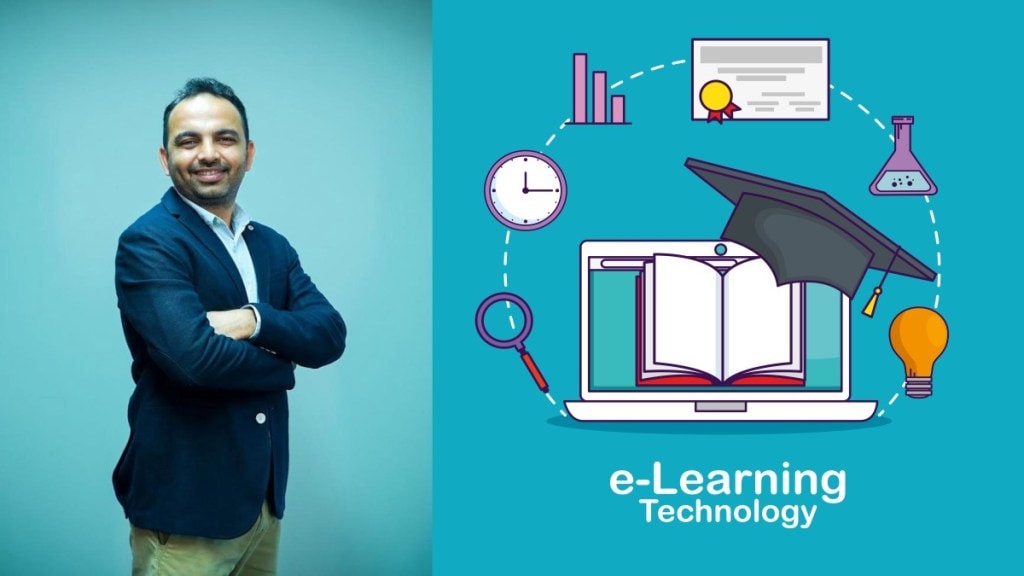By Ankit Gupta
In the diverse landscape of India, educational challenges are as varied as the nation itself. The Annual Status of Education Report (ASER) 2024 highlights stark disparities in educational access and quality, revealing that although over 86.8% of children aged 14-18 are enrolled in educational institutions, about a quarter struggle to read at the level expected of a second grader in their regional languages. This discrepancy is most pronounced in rural areas, where communities face poverty, inadequate infrastructure, and a lack of quality education opportunities. The urgent need for innovative solutions to bridge the educational divide has never been more apparent.
The global pandemic served as a critical turning point for the Indian education system, compelling both educators and students to explore new ways of learning. Blended learning, a hybrid model that combines traditional classroom teaching with digital education strategies, has emerged as a particularly effective solution for students in rural areas, offering them access to quality educational resources.
This delves into how blended learning is transforming education in rural India, making high-quality learning accessible to all, regardless of geographical or financial circumstances.
Bridging the digital divide
Despite advancements in digital infrastructure, a significant digital divide persists between urban and rural India. As of 2020, internet penetration in rural areas is substantially lower than in urban regions, limiting access to online learning resources. Blended learning’s hybrid approach, which leverages offline digital solutions like pre-loaded educational content on tablets and interactive smart classrooms, ensures that education is not hindered by connectivity issues.
Personalised learning: A path to empowerment
Blended learning shines in its ability to personalise education. Oversized classrooms and a scarcity of qualified teachers in rural areas, as highlighted by ASER 2019, impact the quality of education. Blended learning addresses these challenges by enabling students to learn at their own pace, utilising adaptive learning software and digital content tailored to their learning levels and styles.
Enhanced flexibility and accessibility
Blended learning provides unprecedented flexibility and independence in education for students in rural India, breaking down geographical and financial barriers. This model offers a lifeline, enabling students to access free or affordable high-quality educational resources from top educators across the country with just a click. An impressive example of this is the story of Umar Ahmad Ganie from Jammu & Kashmir. Despite challenging circumstances, including working as a manual labourer and having limited access to electricity, Umar’s determination led him to score an impressive 601 in the NEET exam using a borrowed phone to study Physics Wallah’s course. His story is a testament to how blended learning can make dreams achievable, even in the most remote corners of India.
Cost-effective and scalable solutions:
Blended learning presents scalable and affordable solutions for implementing technology in education across rural India. The model enables students to learn from the country’s best educators and engage in doubt-clearing sessions directly with these experts, enriching the learning experience.
Strengthening teacher capacities:
The success of blended learning also relies on empowering teachers with digital tools and skills. Through online training and resources, rural educators have opportunities for professional development, enhancing their teaching methodologies and integrating technology into the classroom.
Access to real-world competitiveness:
Blended learning enables students to not only compete academically in traditional classroom settings but also in online environments that mirror real-world challenges. This innovative approach bridges the gap between theoretical knowledge and practical application, preparing students, especially those in rural India, looking for jobs and preparing for competitive exams, for the complexities of the global job market. By accessing a wealth of online resources and participating in interactive simulations, rural students are exposed to diverse perspectives and problem-solving techniques that are vital in today’s interconnected world.
Leveraging advanced learning tools
The integration of advanced technology, from adaptive learning platforms to virtual labs, ensures that education is inclusive and effective, transforming students from passive recipients to active participants in their learning journey.
As India looks to the future, it is clear that blended learning holds the potential to dramatically transform the educational landscape in rural areas. By making quality education more accessible and adaptable to diverse student populations, this approach can significantly narrow the educational quality gap. The story of Umar Ahmad Ganie exemplifies the impact of these initiatives, demonstrating the power of blended learning to democratise access to quality education across rural India. With sustained effort, collaboration, and innovation from all stakeholders, blended learning can unlock new possibilities for countless students.
The author is the CEO, Physics Wallah (PW) Offline.

